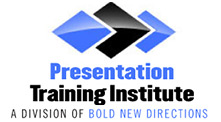Using A Visual Aid During Presentations
“You can have brilliant ideas, but if you can’t get them across, your ideas won’t get you anywhere.” – Lee Lacocca
Lacocca’s quote holds true in every field, and does so for people presenting to either their subordinates or their superiors. Numerous employers of even the most basic entry-level retail workers agree that it often isn’t the contents of an application but rather the way that applicants present themselves that catches their eye. Many jobs and professions can benefit from the ability to present data clearly, effectively, and visually.
Sales
Most people aren’t terribly good at thinking in the abstract. A sales specialist can describe the advantages and savings of a product all day long without having the reality of the product’s benefits sink in. Adding a straightforward, understandable visual drives that reality home, and brings the detail into view in a way that can be readily understood and processed.
 CEO
A CEO is a powerful individual within a company, but even the Chief needs to be able to communicate effectively. Subordinates who understand a point are more effective, shareholders who see the profits are happy, and investors who understand the big picture are freer with their money. Visual aids can drive each of these points home in a way that no amount of conversation can duplicate.
To that end, it is important to look at the power visual aids have in improving presentations. A good visual can turn a solid but unremarkable presentation into one that carries an idea forward. However, visuals can also drag a presentation down if used incorrectly. Visual aids are vital, but need to be used effectively.
Why are Visual Aids So Important?
So, just what is it that makes a visual aid such an important part of a successful presentation? Accuconference brings up the following key points:
- Statistics show that three hours after a presentation only 70% of people can remember content presented verbally.
- The retention of information reinforced with visual content, however, is much higher after three hours: 85 percent, according to California State University data.
- The impact of visual aids on the retention of content in a speech is even more impressive after three days.
- 60% of listeners can remember visually enhanced content, compared with only 10% remembering exclusively verbal presentations.
In essence, more than a quarter of all people have serious difficulty remembering content that is presented without visual illustration of the points under discussion. Let us reiterate that; more than one out of every four people cannot remember content presented without visual cues. Take a business with ten departments or teams. Three of the managers attending any briefing will not remember the salient details unless useful visual aids are presented.
The problem grows when a presentation is made to people outside of one’s own organization. The people who work with the presenter on a regular basis are more likely to remember details than those who do not. They have a familiarity, and can attach importance to a colleague’s words that comes from working toward the same goals. By comparison an external audience member may see multiple presentations from multiple groups; the odds that this external listener will remember any one of these presentations without some type of visual aid is quite low.
So, what are the best times to use visual aids?
Of course, a visual aid is most effective when used at the appropriate time. A client swamped with visual aids without any discussion of the images will likely conclude that you have nothing of substance to offer, since you relied solely on visuals. As Steve Jobs said, “people who know what they’re doing don’t need Powerpoint.” Yet he still relied on visual aids at appropriate moments. Consider the major product releases in which he would close his keynote event, then turn back and say, “Oh, and one more thing,” followed by a picture of the newly released iPhone or iPad. The applause and cheers were deafening. He didn’t say, “We have a new iPhone,” he simply said the famous line and let the image catch the audience.
The University of Leicester has a very good overview explaining potentially valuable times to use a visual aid.
Introduction
A strong introduction captures the audience’s attention and brings them into the discussion. Authors often say they have only one chapter or even one sentence to capture their audience and this is true in the presentation field as well. Consider a visual aid showcasing your presentation title. Paired with a short, memorable phrase, a visual during the introduction can be the hook that pulls the audience in.
Main Body of Content
Here you will want strong illustrations of your key points. Again, don’t substitute imagery for content, but select visuals that emphasize your spoken points. Showcase where your product is strong compared to a competitor’s. Illustrate the profits or savings of choosing your service.
Conclusion
The introduction draws the audience in, and the main presentation gives them the details to work with. However, it is often the last thing you say that stays with someone. If your presentation drifts off inconclusively, their opinion of your work will likely do the same.
Here is also where you can use the subtle power of a visual to good effect. Suppose you have a product that will save client money if used instead of existing products. Put together a visual showing those savings over several years; this way, you get the client thinking unconsciously about the idea of working with you for those years, something you can assume they would not have considered on their own. The presentation ends with a clearly understood visual, and you leave them with the thought that you are a provider willing to work with them for a long time.
Different Types of Visual Aids
There are multiple kinds of visual aids that can be used in presentations. Each has its own strengths and weaknesses, and each can make different kinds of presentation stronger.
Slideshow Software
This is the classic presentation format. A simple program of slides that can be advanced as the presentation goes on, keeping pace with the speaker’s words. This is most useful in educational or informative discussions. The process of setting up the projector is a bit of a time investment, so it doesn’t work as well for a shorter talk. Use it when you have the audience’s attention for a longer period, and have a number of facts that need illustration.
Video Presentation
One of the key reasons for the success of the long-running television series Mythbusters was in their unapologetically visual style. They did wonders for raising awareness of urban myths and promoting critical thinking, but what fans remember is seeing that cement truck vaporized in an explosion. In the same way, a smart video element can help carry a presentation forward. As with slideshow software, this requires some setup and equipment, so make sure to use it when you have time and attention. By the same token, they want to engage with their presenter, so don’t use the video as the entirety of the segment. The introduction phase is a good time to use a video to bring people in to your general topic and showcase your product, as is the body of the presentation.
Handouts
People have a stronger memory when they have something tangible to carry with them. In the Sales arena, a good handout can be the kind of visual aid that leverages this tendency to your advantage. A well-produced 3-fold brochure is something the client can carry with them, doesn’t take up very much space, and will remind them of your organization when they return to their place of work, if they keep it.
Visual Aid Software Choices
Powerpoint
The classic visual presentation software. Powerpoint is straightforward and robust. You can import visuals, organize slides, and even have a degree of control over animations and transitions. The main weakness is that everyone is familiar with it, so be aware that clients may be skeptical of it as a professional presentation medium.
Prezi
A popular alternative to Powerpoint, Prezi moves away from the idea of sequential slideshows into a “big picture” arrangement. A single major slide is offered, and the viewer transitions between portions of the slide. By moving back and forth between the big picture and more concrete elements, the presenter helps tie the information together into a coherent whole for the audience.
Slideshare
Slideshare is interesting in that it is not used to create visuals in itself. Rather, it allows presenters to embed visuals, links, videos, pdfs, and other material into an easily-accessed location. Useful for sharing data in a distributed fashion when you won’t be meeting face to face, or when you wish a client to be able to access your presentation after the initial meeting.
Presaria
Preseria is a useful tool to visually display the organization of a conference or meeting. It is a solid choice in educational presentations aimed at helping people understand the structure of a project or conference. It does lack somewhat in its number of options, however.
More Than Pretty Pictures
Visual aids are not only a useful tool during public speaking and presentations, but should be viewed as a necessity to create a lasting impact. People remember what they can see more than what they can hear. However, visual aids are more than a way to overcome clients’ bad memories. They can engage the audience, open up a dialog, and bring people on board in a way that mere words simply cannot do.







